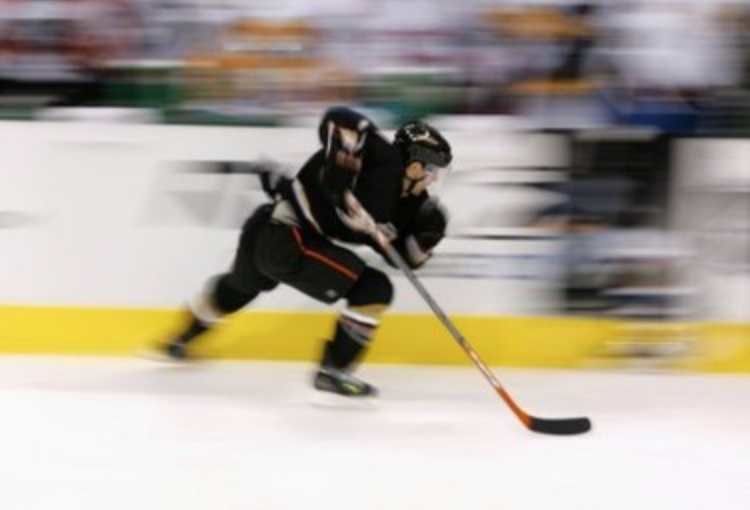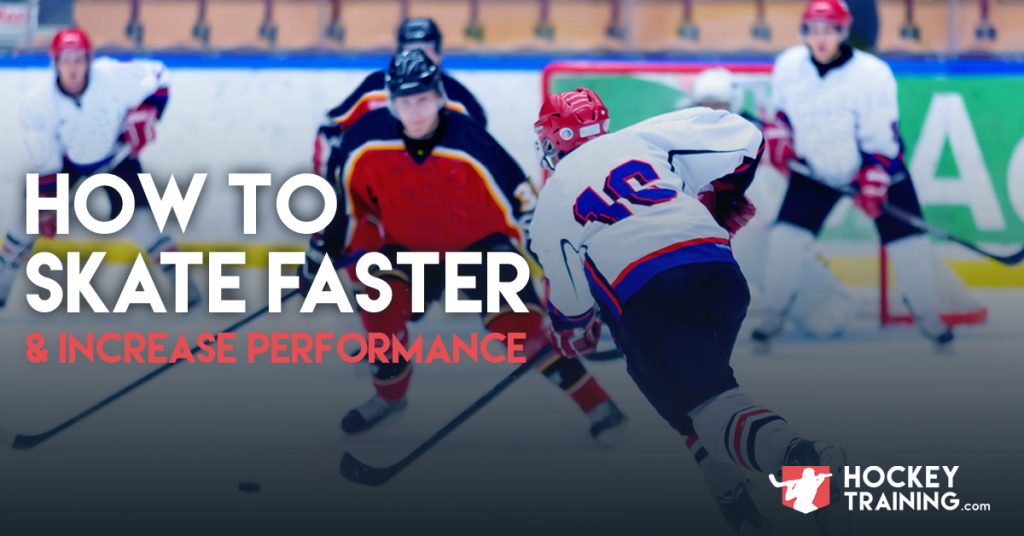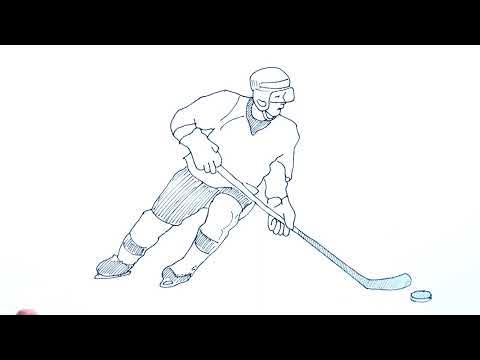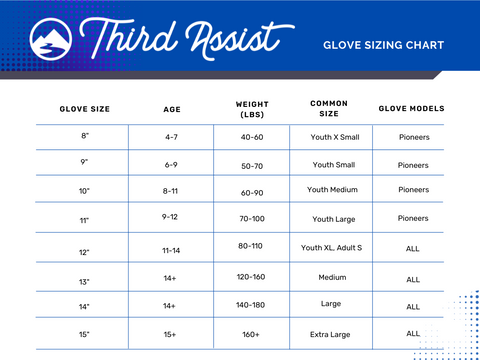Want to skate faster in ice hockey? Speed on the ice can change your game.
It gives you an edge over opponents and helps you reach the puck quicker. Ice hockey is a fast-paced sport where speed is crucial. Players who can skate faster have a significant advantage. They can outmaneuver opponents, break away for scoring opportunities, and effectively support their team.
Improving your skating speed isn’t just about raw power; it involves technique, balance, and practice. In this guide, we will explore tips and strategies to help you skate faster on the ice. Whether you’re a beginner or an experienced player, these insights can help you enhance your performance and make a noticeable difference in your game. Let’s dive into the essentials of boosting your ice hockey speed.
Importance Of Speed In Ice Hockey
Speed is crucial in ice hockey. It can make a huge difference. Being fast means getting to the puck first. It means outskating opponents. It means creating scoring chances. Improving your speed can elevate your game.
Impact On Game Performance
Speed affects every aspect of your game. Fast skaters can quickly change direction. They can avoid checks. They can also recover faster after a play. Speed helps in both offense and defense. It ensures you stay ahead in the game. Teams with faster players often dominate the ice. They control the pace of the game. They can capitalize on more opportunities.
Advantages Over Opponents
Speed gives you a clear edge over opponents. It allows you to beat defenders. You can get past them with ease. Fast skaters can also backcheck effectively. They can disrupt the opponent’s play. Speed makes you unpredictable. Opponents find it hard to keep up. It creates gaps in their defense. This leads to more scoring chances. Speed forces opponents to make mistakes. It puts them under constant pressure.
Proper Skating Stance
Achieving a proper skating stance is crucial for increasing your speed in ice hockey. A well-balanced stance enhances control, power, and efficiency. It allows you to move swiftly and smoothly across the ice. Here, we explore the essential elements of a proper skating stance.
Knee Bend And Posture
Bending your knees is vital. It lowers your center of gravity, providing better balance. Aim for a deep knee bend. Your knees should align with your toes. This creates a strong base for pushing off.
Maintain an upright posture. Keep your back straight and avoid leaning too far forward. Imagine a straight line from your head to your hips. This posture keeps your weight centered, aiding in faster movement.
Weight Distribution
Proper weight distribution is key. Balance your weight evenly on both feet. Avoid putting too much weight on your heels or toes.
Keep your weight slightly forward. This position helps you push off with more force. Your skates should grip the ice firmly, giving you better control and speed.
Shift your weight smoothly during turns and strides. Consistent weight distribution ensures fluid motion. Practice this technique to improve your speed and agility.
Powerful Stride Techniques
Boosting your speed in ice hockey requires mastering powerful stride techniques. These techniques help you maximize your energy and glide swiftly across the ice. Let’s dive into two key components: maximizing push-off and effective leg extension.
Maximizing Push-off
The push-off phase is crucial for speed. Pushing off the ice effectively propels you forward with more power. Here are some tips to enhance your push-off:
- Bend your knees to lower your center of gravity.
- Engage your core muscles to stabilize your body.
- Push through the balls of your feet to get the most force.
- Keep your skates at a 45-degree angle to the ice.
These steps ensure you get the most out of each stride.
Effective Leg Extension
After pushing off, the next phase is the leg extension. A full, strong extension propels you further and faster. Follow these steps for a better leg extension:
- Fully extend your leg behind you.
- Point your toes downward to maximize the length of your stride.
- Quickly recover your leg back under your body.
- Maintain balance by keeping your shoulders aligned with your hips.
Practice these techniques regularly. Consistency is key to improving your stride and increasing your speed on the ice.

Credit: www.youtube.com
Enhancing Acceleration
Enhancing acceleration is crucial for any ice hockey player aiming to skate faster. Acceleration helps you gain speed quickly, making you more competitive on the ice. In this section, we will explore two effective methods: quick start drills and explosive moves.
Quick Start Drills
Quick start drills focus on improving your initial burst of speed. These drills train your muscles to react faster. Start in a ready position with your knees bent. Push off with one leg and then the other. Keep your strides short and powerful. Repeat this drill several times. Gradually increase the distance as you get better. Consistency is key for improvement.
Explosive Moves
Explosive moves enhance your power and speed. They require strength and agility. One effective exercise is the jump squat. Start in a squat position. Jump as high as you can. Land softly and return to the squat position. Repeat this move in sets. Another exercise is the box jump. Jump onto a sturdy box or platform. Step down and repeat. These exercises build the muscles needed for quick acceleration.
Improving Edge Control
Improving edge control is key to skating faster in ice hockey. Edge control helps you move smoothly and change directions quickly. Better edge control means better balance and agility on the ice.
Inside And Outside Edges
Understanding inside and outside edges is crucial. The inside edge is the part of the skate blade closest to your body. The outside edge is the part farthest from your body. Mastering both edges allows you to turn sharply and accelerate faster.
Practice shifting your weight to feel the difference between the edges. Start by gliding on one foot, then switch to the other foot. This helps you get comfortable with using both edges.
Edge Work Drills
Edge work drills improve your control. One effective drill is the “C-cuts.” To do this, push off with the inside edge of one skate and glide. Then, use the inside edge of the other skate to push and glide in the opposite direction. Repeat this to create a “C” shape on the ice.
Another useful drill is the “Figure 8.” Skate in a figure 8 pattern using both inside and outside edges. This helps you practice sharp turns and quick changes in direction.
Try “Swizzles” to further improve edge control. Keep your feet together and push outwards with both skates, then pull them back in. Repeat this motion to strengthen your edges and improve balance.
Consistent practice of these drills will enhance your edge control. Better edge control leads to faster and more efficient skating.
Advanced Turning Skills
Advanced turning skills are essential for every ice hockey player. Improving these skills can significantly boost your speed and agility on the ice. With the right techniques, you can turn faster and more efficiently, giving you an edge over your opponents.
Crossovers
Crossovers are a key technique for faster turning. They involve crossing one foot over the other to maintain momentum during a turn. Here’s how to perfect your crossovers:
- Body Position: Keep your body low and centered.
- Foot Placement: Your outside foot should cross over your inside foot.
- Edge Control: Use the inside edge of your outside skate and the outside edge of your inside skate.
- Arm Movement: Swing your arms in the direction of the turn for balance.
Practice crossovers in both directions to become comfortable with turning either way. This will make your movements more fluid and less predictable.
Tight Turns
Tight turns allow you to change direction quickly. This skill is crucial when evading opponents or navigating through tight spaces. Follow these steps to improve your tight turns:
- Approach: Enter the turn with speed.
- Lower Your Center of Gravity: Bend your knees and lean into the turn.
- Weight Distribution: Shift your weight to the inside edge of your outside skate and the outside edge of your inside skate.
- Head and Shoulders: Lead with your head and shoulders in the direction you want to go.
Practicing tight turns regularly will enhance your agility and control. Incorporate these drills into your training to see improvement.
| Technique | Key Points |
|---|---|
| Crossovers | Body position, foot placement, edge control, arm movement |
| Tight Turns | Approach, lower center of gravity, weight distribution, head and shoulders |
Building Endurance
Building endurance is essential for ice hockey players who want to skate faster. Endurance helps maintain speed throughout the game, especially during intense moments. Here, we will explore two key methods to build endurance: Interval Training and Aerobic Exercises.
Interval Training
Interval training involves alternating between high-intensity and low-intensity skating sessions. This method boosts your cardiovascular system. You can follow this simple routine:
- Skate at full speed for 30 seconds.
- Slow down to a relaxed pace for 90 seconds.
- Repeat this cycle for 20 minutes.
Increasing the intensity over time will help you build stamina. Vary your intervals to keep the workouts challenging and effective.
Aerobic Exercises
Aerobic exercises are crucial for building endurance. They help improve your overall fitness level. Consider incorporating the following activities into your routine:
- Running: Go for a 30-minute jog 3 times a week.
- Swimming: Swim laps for 45 minutes to strengthen your lungs and muscles.
- Cycling: Cycle for an hour to improve leg strength and stamina.
These exercises will enhance your ability to skate longer and faster. Consistency is key, so ensure you follow a regular schedule.
Building endurance takes time and effort. Stay dedicated and you will see improvements in your skating speed and overall performance on the ice.

Credit: www.hockeystrong.ca
Off-ice Training
Off-ice training is crucial for ice hockey players who want to skate faster. It helps build strength, power, and agility, which are essential for speed on the ice. By incorporating specific exercises into your routine, you can improve your skating performance significantly.
Strength Training
Strength training is vital for developing the muscles used in skating. Focus on exercises that target your lower body, such as squats and lunges. These movements help build the power needed for quick starts and strong strides. Don’t forget your core. A strong core provides stability and balance, which are important for maintaining speed.
Plyometric Exercises
Plyometric exercises boost explosive power and speed. These exercises involve rapid stretching and contracting of muscles. Try jump squats and box jumps to improve your leg power. These movements simulate the explosive actions needed for faster skating. Include lateral jumps to enhance side-to-side agility, which is key for maneuvering on the ice.

Credit: www.youtube.com
Frequently Asked Questions
How Can I Improve My Skating Speed?
Improving skating speed involves regular practice, strength training, and perfecting your technique. Focus on explosive starts, maintaining proper posture, and increasing leg strength.
What Exercises Help With Skating Faster?
Exercises like squats, lunges, and plyometrics can enhance leg strength and explosive power, making you skate faster.
Why Is Technique Important For Speed?
Proper technique reduces friction and maximizes efficiency. This allows you to maintain higher speeds with less effort and better control.
How Does Diet Affect Skating Speed?
A balanced diet provides the necessary energy and nutrients for optimal performance. Proper nutrition aids in recovery, muscle strength, and overall stamina.
Conclusion
Improving your skating speed in ice hockey takes practice and dedication. Focus on building strength, honing technique, and maintaining balance. Regular drills help you get better over time. Consistency is key. Always wear the right gear for safety and performance.
Remember, progress may be slow but keep pushing forward. Stay motivated and enjoy the process. With effort, you’ll see improvements. Keep practicing and never give up. Your hard work will pay off on the ice.



